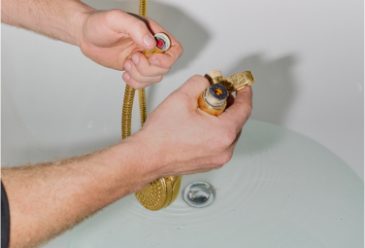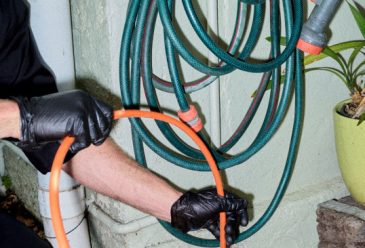Let’s face it: few things ruin your day faster than a clogged toilet. Whether it’s refusing to flush properly or threatening to overflow, it’s one of those household issues that demands immediate attention. The good news? Most blockages can be tackled without calling in a plumber—if you know what you’re doing.
In this guide, we’ll cover six proven DIY methods to fix a stopped up toilet, what causes these clogs in the first place, and when it’s time to hand things over to the professionals.
What Causes a Toilet to Get Clogged?
Before you grab the plunger, it helps to understand what causes blockages in the first place. Here are the most common culprits:
- Too much toilet paper: Even “flushable” types can build up and cause clogs.
- Non-flushable items: Wipes, feminine hygiene products, tissues, and even cotton buds belong in the bin, not the bowl.
- Low-flow toilets: Older or water-saving models sometimes lack the force to flush effectively.
- Build-up in the pipe: Over time, mineral deposits, grease, or waste can narrow the pipe’s diameter.
- Damaged sewer lines: Cracks or collapses in the pipe can restrict flow.
- Tree root invasion: Roots seeking moisture can grow into sewer lines and create major blockages.
Many of these clogs are minor and manageable without professional help. So let’s get into the DIY clogged toilet fixes.
DIY Toilet Unclogging Methods
1. The Classic Plunger Method
So, how do you fix a clogged toilet? Let’s start with the hero of the bathroom toolkit: the plunger. For toilets, you want a flange plunger (the kind with an extended rubber flap that fits into the toilet drain to create a better seal).
How to use it:
- Make sure there’s enough water in the bowl to cover the plunger head.
- Position the plunger over the drain and press down slowly to get a good seal.
- Use firm, rhythmic plunges (up and down) without lifting the plunger off the drain.
- After 15–20 seconds, lift the plunger and check for drainage.
- Repeat if needed.
Safety tip: Wear gloves and maybe even goggles. This can get splashy.
2. Hot Water and Dish Soap
Great for soft clogs (especially from greasy waste), this method uses everyday items to help break things up.
Steps:
- Pour about half a cup of dish soap into the toilet bowl.
- Heat a bucket of water until it’s hot, but not boiling.
- Carefully pour the hot water into the bowl from waist height (for a bit of extra pressure).
- Let it sit for 15–30 minutes, then flush.
3. Baking Soda and Vinegar
You know that satisfying fizz you get from science experiments? It works in your toilet too.
How to do it:
- Pour one cup of baking soda into the bowl.
- Follow it with two cups of vinegar (white is best).
- Let the mixture fizz for 30–60 minutes.
- Flush the toilet to see if the blockage has cleared.
4. Toilet Auger (Plumbing Snake)
For those deeper or more stubborn clogs, a toilet auger (also known as a closet snake) is your best bet.
How it works:
- Insert the auger’s rubber end into the toilet drain.
- Slowly turn the handle to feed the cable deeper into the pipe.
- When you feel resistance, rotate gently to break through or hook the blockage.
- Once cleared, retract the auger and flush.
You can find these at Bunnings or any hardware store. Just be cautious—it takes some care and strength, and you definitely don’t want to scratch the porcelain.
5. Wire Coat Hanger (as a Last Resort)
No auger? A wire coat hanger can be your Plan Z. This is more DIY-hack than the recommended method, but it can work in a pinch.
How to do it:
- Straighten the hanger and wrap one end in a small cloth or duct tape to prevent scratches.
- Gently insert the padded end into the toilet drain.
- Wiggle it around to break up or dislodge the blockage.
Caution: This method can damage your toilet bowl if done too aggressively. Use only if nothing else works, and with extreme care.
6. Wet/Dry Vacuum
If you happen to own a wet/dry vac, it can be surprisingly effective.
Here’s how:
- Set the vacuum to “wet” mode.
- Create a seal around the hose using a rag or towel.
- Insert the hose into the toilet and switch it on to suck out the water and the blockage.
This method is best suited to floor waste drains or situations where there’s excess water that needs removing fast.
What NOT to Do When Unclogging a Toilet
Some clogs can go from minor to major if you make the wrong move. Avoid these common mistakes:
- Don’t use boiling water: Hot water is great; boiling water is not. It can crack your toilet bowl and cause more damage.
- Avoid chemical drain cleaners: These are harsh on your pipes, bad for the environment, and often ineffective for toilet clogs.
- Don’t flush repeatedly: If one flush doesn’t work, don’t keep trying. You’ll only risk a messy overflow.
When to Call a Professional Plumber
Sometimes, DIY methods aren’t enough to unclog a toilet, and that’s okay. Here’s when it’s time to put down the plunger and pick up the phone.
Multiple Blocked Drains
If your toilet, sink, and shower are all slow or backed up, you might have a blockage in your main sewer line. That’s a job for a professional.
Frequent Clogs
Recurring toilet blockages can signal a design issue, pipe damage, or roots in your sewer line. A plumber can investigate with specialised tools.
Overflow or Water Damage
If water has spilled onto your floors, or you’re seeing stains or bubbling paint, call a licensed plumber immediately to stop further damage.
Need Help? Call Good Hands Plumbing Today
When DIY hits a dead end or things get messy, it’s time to bring in the professionals. At Good Hands Plumbing, we specialise in blocked toilets, drain cleaning, and emergency plumbing.
We’re licensed, reliable, and always ready to help—whether your clog is a quick fix or part of a bigger plumbing issue. With upfront pricing and a safety-first approach, we take the stress (and mess) out of the equation.
Get in touch today and let’s get your toilet—and your day—back on track.



